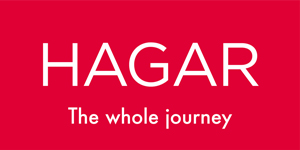Please join us to pause for a moment to remember the millions of people who have fallen prey to trafficking because of unscrupulous smugglers who exploit their vulnerabilities for their own profit. The human trafficking trade generates $150 billion each year in illegal profits and many have fallen prey because of the circumstances they face arising from poverty, war and conflict – circumstances that are far from their control. As a civil society, we have the responsibility to put a stop to this and not tolerate it any further. This is a fight that we can and must win.
In the recent release of the 2016 Trafficking in Persons Report, it is heart-wrenching to learn of people’s suffering, abuse of women, and mistreatment of children. None of them chose this life but yet many have endured and continue to suffer such abject treatment. We also learn of survivors who have escaped from their misery and are now voices for those who remain trapped. We celebrate their victories and rejoice with them as they step forward bravely to provide key insights to the deceptive schemes and tactics employed by smugglers.
 As labour trafficking is becoming more prevalent, businesses and consumers have a key role to play too, in helping ensure forced labour is not used to produce the goods and services they sell and purchase. Massive supply chain systems hold many weak links due to the numerous fragmentations in the process.
As labour trafficking is becoming more prevalent, businesses and consumers have a key role to play too, in helping ensure forced labour is not used to produce the goods and services they sell and purchase. Massive supply chain systems hold many weak links due to the numerous fragmentations in the process.
Traffickers recognise and exploit these vulnerabilities. Organisations must have transparent and robust practices to ensure that their processes are free from trafficking crimes. While much has been done, much more lies ahead of us with the many who remain bound by the manipulation of traffickers who continue exploiting them. At its core, trafficking exploits the vulnerabilities of a person and occurs in every country in the world.
Singapore is a destination country and transit hub for trafficking activities, where victims are subjected to sexual and labour exploitation. Placed in Tier 2 list on the 2016 Trafficking in Persons Report, Singapore does not fully comply with the minimum standards prescribed in the Trafficking Victims Protection Act but has been making significant effort to eliminate trafficking.
An interagency taskforce setup by the Singapore government is looking into addressing human trafficking. Initiatives include raising public awareness in the local community and internationally with the neighbouring countries, and empowering NGOs to do the same. The enactment of the Prevention of Human Trafficking Act (PHTA) which came into force in March 2015 also helps ensure that there is a penalty framework in place to effectively deter trafficking.
Hagar has been working with the local authorities in Singapore to step up victim care and protection. To enable better detection of trafficking activities at the borders, Hagar was appointed by the Singapore government to conduct training to over 4,000 frontline policemen to improve their identification of trafficked victims.
You can help by being aware of the signs of trafficking and the available channels to report such incidents. Read the Report and find out how human trafficking is invading our communities and what we can do about it.
Photograph is taken from page 8 of the Trafficking In Persons Report 2016.

